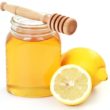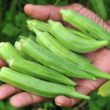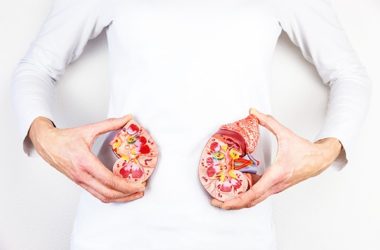The simplest way to describe clean eating is in with the good and out with the bad. The idea focuses on eating foods that are packed with nutrients as opposed to those that are riddled with sugars, preservatives and chemicals. The goal here is to eat as close to the source as much as you can and to eat them in their natural form which is one of the reasons why organic and local products are preferred by those who follow clean eating. Learn how clean eating works using these simple steps.
1. Re-think your “process”
DO: reducing your intake of processed foods is one of the steps you should take in clean eating. Jared Koch, who is the founder of Clean Plates, said that it was necessary to reduce intake instead of eliminating processed foods that are high in preservatives, sugar, GMOs, dyes, chemicals and oils of poor quality.
DON’T: discount all kinds of processed foods. There are some like pre-cut veggies and bagged spinach that are processed minimally for ease of use while others are processed to increase their nutritional value such as breakfast cereal that has added fiber and milk that is fortified with vitamin D and calcium. You should read the nutrition label to get an overview of the food to determine if it’s heavily processed or not. The best way to reduce your GMO intake is to go for foods that are labelled “Non-GMO project Verified.”
2. Opt for whole grains
DO: Chef Devin Alexander, author of eight cookbooks and New York Times’ best seller, suggests that you go for whole or sprouted grains instead of processed grains. Researchers from Harvard actually suggest that you devote a quarter of your plate to whole grains since it can help reduce your risk of Type 2 diabetes, colorectal cancer, and cardiovascular disease. You can increase your intake by eating pilaf made from whole-grain, pasta made from whole-wheat, and brown rice.
DON’T: get fooled by the packaging. You may come across buzzwords such as “100 percent wheat”, “stone ground”, and “multigrain” but they don’t necessarily mean these foods are whole-grain. You should also look for these guidelines by the USDA: no added sugars in the first three ingredients, whole grain as the primary ingredient, the word “whole” before any ingredients with grain, stamp that reads “whole grain”, and a ratio of less than 10:1 for carbohydrate-to-fiber.
3. Satisfy your sweet tooth naturally.
DO: opt for natural sweeteners instead of sugar. Even though the American Heart Association recommends 6 teaspoons of sugar for women and 9 teaspoons for men per day, most adults consume more than 22 teaspoons of sugar daily. Dr. Michael Fenster, author of “Eating Well, Living Better” and a cardiologist, said that pure sucrose actually yields calories. Natural sweeteners actually provide distinctive flavors and even redemption in the form of healthy compounds and minerals that they contain.
DON’T: consume or even drink products that contain sweeteners that are artificial like aspartame or sucralose. In a 2014 study that was posted in Nature discovered that the consumption artificial sweeteners that are non-caloric may lead to abnormal metabolism and higher risk of diabetes. Go for natural sweeteners such as molasses, maple syrup, agave, honey, rice syrup, and barley.
4. Make a balanced diet.
DO: one of the important tenets found in the Eat-Clean Diet series by the expert Tosca Reno, suggests that you eat a combination of complex carbohydrates and lean proteins during mealtimes. Among the complex carbohydrates that you can use are whole-grain cereals and breads, legumes, and starchy vegetables. For lean proteins, egg whites, lean meats, poultry, legumes and beans.
DON’T: According to Chef Devin Alexander of the “Biggest Loser” recommends that you shouldn’t eat starch and bread with wine and dessert but rather choose one and combine it with lots of vegetables and lean proteins to create a balanced meal.
5. Embrace healthy fats.
DO: you shouldn’t avoid all fats. According to Dr. Michael Fenster, fats are usually maligned but some of them are actually essential for the body. Healthy fats that can be found in olive oil, avocados, and nuts, can help regulate your blood sugar levels, reduce levels of cholesterol, and keeps you full.
DON’T: confuse “low-fat” with healthy fats. Based on a study that was published in the Journal of Marketing Research in 2006, discovered that low-fat actually make people eat more since it reduce the guilt that is related to food as well as affect the perception of what is the appropriate size of serving.
6. Read labels.
DO: get into the habit of looking and reading nutritional labels. Even those that are considered as healthy may have ingredients that are harmful to your health. Although it can be tedious to read nutritional labels all the time, according to Chef Devin Alexander of the “Biggest Loser”, he discovered that modified cornstarch was added to tea bags of a common tea brand while microwave popcorn that has lime and salt were even less healthy compared to those being sold in movie houses.
DON’T: purchase anything with ingredients that you can’t even pronounce. The shorter the list is the better. Alexander further said that it’s best to get most of your diet on foods that don’t require any labels.
7. Plant the seed.
DO: go for a diet that is plant-based. According to Jared Koch, you don’t really need to be a vegan or vegetarian but you should increase your intake of vegetables along with nuts, seeds, fruits, spices and herbs to get your needed nutrients. An easy guideline as suggested by the U.S Department of Agriculture that you fill at least half of the plate with vegetables and fruits every meal time.
DON’T: miss adding plenty of proteins to your meals especially when foregoing meat. Foods that are plant-based and high in protein include hemp seeds with 10 grams, chia seeds with 12 grams, cannellini, cranberry beans, adzuki with 17 grams of protein, and lentils with 18 grams.
8. Get to the meat.
Although many assume that clean eating is synonymous with vegetarian eating, meat can actually be included in your diet. DO: Jared Koch, founder of Clean Plates, suggests that you go for high quality meats specifically those that are grass-fed and pasture-raised or meats that have less antibiotics and hormones. Based on a study that was published in the Nutrition Journal back in 2010 it was discovered that beef that had been grass-fed had lower saturated fatty acids that elevate cholesterol levels and they were actually found to have higher amounts of vitamin E, vitamin A, omega-3 fatty acids, as well as antioxidants that fight cancer compared to beef that has been fed grains.
DON’T: overdo your consumption of meat. According to the American Cancer Society, they recommend that you limit your consumption of meat to not more than three to four ounces as part of a healthy meal. This amount is similar to the size of a deck of card or even a soap bar.
9. Buy smart.
DO: Maximize your efforts when shopping for fresh foods by checking the dates before reaching for the freshest produce. Chef Devin Alexander said that many forego buying fresh fruits and vegetables because they say that they go fairly quickly. Although they do spoil faster compared to foods that are processed, but if you check the dates and purchase the products that are way back in the refrigerator, they can last longer.
DON’T: ditch food without determining the difference between by “use by” and “sell by” labels. Based on a study that was posted in September of 2013, the results showed that 91% of the consumers were actually throwing away foods that based on the “sell by” label even when the foods are still safe to eat.
10. Remain hydrated.
DO: consume plenty of water throughout the day. Experts suggest that you drink 6 to 8 ounces or at least two liters of water daily. The amount tends to vary depending on the person, the climate that they live in, as well as levels of activity. If you’re not into drinking water, increase your intake of foods that are high in water content such as tomatoes, celery, melons, and oranges.
DON’T: satiate your thirst by consuming alcohol. Some of those who follow clean-eating tend to avoid drinking alcohol altogether while others regulate their consumption. If you do want to indulge yourself in alcohol, go for red wine or drink only in special occasions.
11. Avoid stressing yourself.
Although the principles listed here can be used as guidelines, clean eating shouldn’t be stressful and can be customized. Chef Devin Alexander said that there are those who assume that if they eat even a small amount of grain of wheat or even white sugar they’re not clean eating. Clean eating is best achieved by aiming towards eating lots of unprocessed foods, vegetables, and lean proteins and at the same time, minimizing consumption of foods that are off-limits on occasion.













